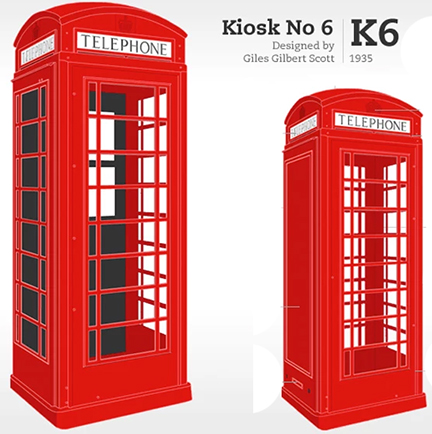The Red Telephone Booth History
What You Never Knew
August 09, 2016
The Man Behind The Booth
The famous phone box was designed by British architect Sir Giles Gilbert Scott.
The leading architect's most other famous achievements were structures such as the Liverpool Cathedral, Waterloo Bridge and Battersea Power Station.
It All Began In 1926
First introduced to the streets of London in 1926, the red K2 telephone booth were only for the capital and erected within other areas under special circumstances.
K2 RED TELEPHONE BOX
The Big K2's Little Sister K6 Takes Over. Weighing over a tonne, the K2 is quite a remarkable and imposing structure. On the top of the kiosk, on all four sides is the Royal crest of King George V formed from a series of holes to provide ventilation.
However the smaller and younger booth the K6 is much more common and widely used throughout the UK.
Only very few K2 booths were produced so they are very rare and few remain today.
The post office once responsible for the telephone booths had to discontinue the original K2 due to the expensive costs and its size in favour of other designs.
So in 1935 the K6 Jubilee kiosk was designed, similar to the K2, being made of cast iron and painted red but being 25% lighter in weight at around 3 quarters of a tonne.
By the end of the 1930's they were roughly 20,000 K6 telephone booths in use all over the UK.
K6 Red Telephone Booth
A Sad Goodbye To The Red Telephone Booth
By the time of the 1970's and 80's red telephone booths began to age, sadly had problems with vandalism and a failure to repair quickly resulted in the classic telephone booth being phased out.
In 1985 a privatised company BT announced sweeping changes to improve the condition of kiosks.
The new kiosks went through a lot of design experimentation to prevent vandalism which resulted in many of the classic K6 kiosks to be removed or sold off.
The result was a radically less visually pleasing design as a replacement. Fortunately, however, about 2000 red telephone booths were declared listed building and remain in place.


